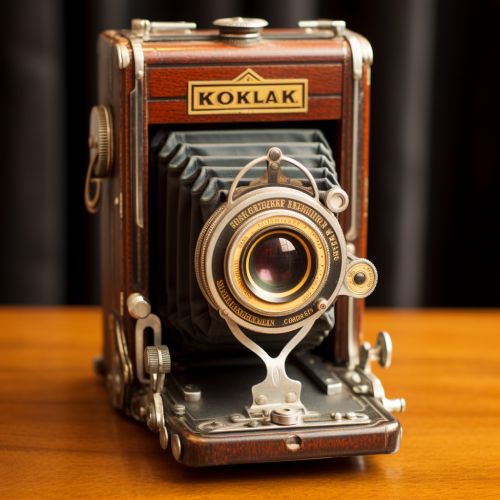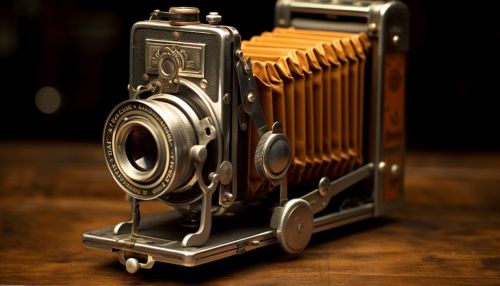Eastman Kodak
History
Eastman Kodak, commonly known as Kodak, is an American technology company that was founded by George Eastman and Henry A. Strong on September 4, 1888. The company's primary business was in imaging products, with its historic basis on photography. The company is headquartered in Rochester, New York.


The company's early growth was fueled by the first camera suitable for non-expert use, the Kodak camera, introduced in 1888. The camera was a simple box camera with a fixed-focus lens and single shutter speed, which along with its relatively low price, appealed to the average consumer. The Kodak camera was the first to use roll film, a technology that would remain at the core of the company's products for more than a century.
In 1892, Eastman Kodak was incorporated in New Jersey. It made its initial public offering in 1901. George Eastman was a major philanthropist, establishing the Eastman School of Music, and schools of dentistry and medicine at the University of Rochester and in several other universities.
Innovation and Expansion
Kodak continued to innovate in the field of photography and imaging. In 1900, the company introduced the Brownie, a simple and inexpensive box camera that introduced the concept of the snapshot. The Brownie was extremely popular and introduced the concept of photography to the masses.
In 1935, Kodak introduced Kodachrome, a color reversal stock for movie and slide film. Kodachrome film was known for its rich colors and exceptional sharpness, and it quickly became the standard for color film photography.
During the 1950s and 1960s, Kodak made a series of acquisitions to expand its product line to include electric eye cameras, projectors, and other photographic equipment. The company also entered the professional and consumer markets for printers and copiers.


In the 1970s, Kodak made another significant contribution to the photography industry by introducing the concept of the digital camera. The first digital camera was created by Kodak engineer Steven Sasson. Although it was a rudimentary device by today's standards, it was a revolutionary concept at the time.
Decline and Restructuring
Despite its many innovations, Kodak struggled to adapt to the digital age. The company's revenues began to decline in the late 1990s as consumers shifted from film to digital photography. Kodak's attempts to enter the digital market were unsuccessful, and in 2012, the company filed for Chapter 11 bankruptcy protection.
During the bankruptcy proceedings, Kodak sold many of its patents to a group of companies including Apple, Google, and Microsoft. The company emerged from bankruptcy in 2013, focusing on its two core businesses: digital printing and enterprise services.
In recent years, Kodak has continued to innovate and adapt to the changing market. The company has launched several new products, including the Kodak Ektra smartphone and the Kodak Super 8 revival film camera.
